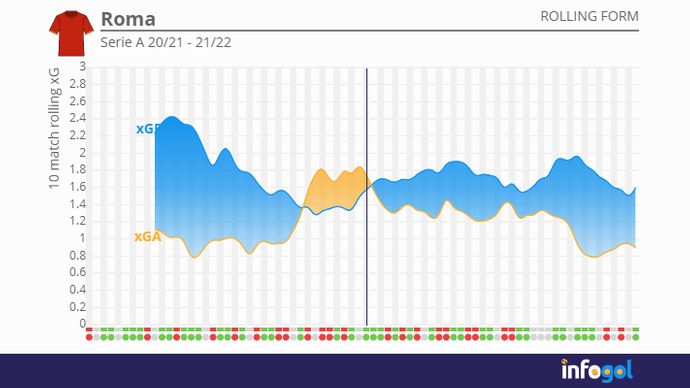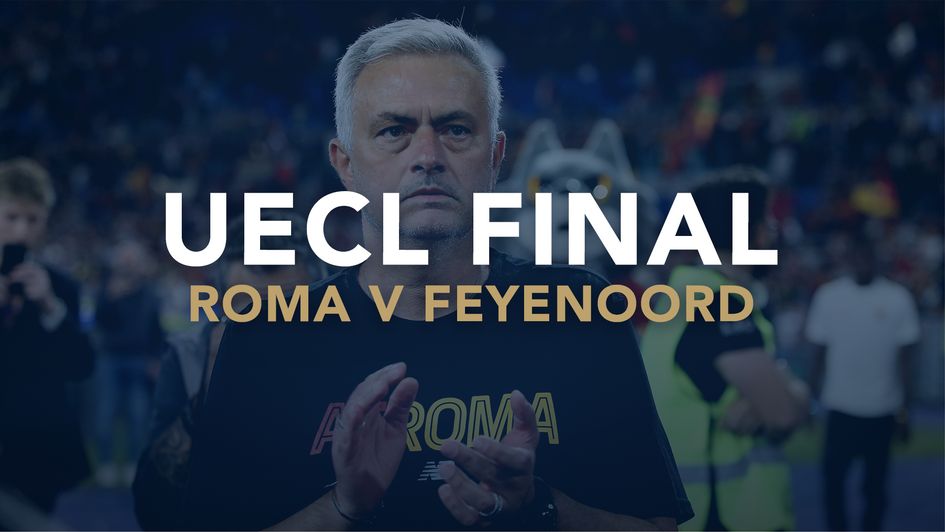 Fast Results
Fast Results Scores
Scores
Is Jose Mourinho still the special one?
Jose Mourinho's Roma defeated Feyenoord in the Europa Conference League final on Wednesday. Have journalists and fans alike been too harsh on the Special One?
This article was originally written on May 24, before Roma's Europa Conference League final win over Feyenoord.
Consistency.
It is everything in football. When Jose Mourinho burst onto our screens declaring himself the special one almost two decades ago it was as though his teams had a robotic efficiency.
But, after turbulent seasons with Manchester United, Tottenham and now Roma, it appears on the surface as if Mourinho’s Midas touch is one of inconsistency.
For every dogged, pragmatic win, there is a lifeless, uninspired defeat.
Strangely though, the underlying numbers disagree. In fact, Jose’s Roma are a model of expected goals (xG) steadiness.
Mourinho left Manchester United 17 matches into the 2018-19 season with his side sixth in the Premier League table. Two campaigns later he was let go by then seventh-placed Tottenham, days before the Carabao Cup final.
And in his first season in charge of Roma he led the Italian club to a sixth place finish in the Serie A table.
On paper it seems as if nothing has changed, Mourinho is continuing to operate at the ‘battle for a Europa League places’ level, despite arriving with promises of Champions League football.

But, things are looking up for the Portuguese.
Across Mourinho’s tenure at Spurs his team averaged 1.45 expected goals for (xGF) per game and 1.47 xGA per game, while in previous manager Mauricio Pochettino’s final 58 matches they averaged 1.49 and 1.41.
There was very little between the stats in the pair's final 58 games, and maybe spoke more to the fact that a lack of investment and a stale squad were holding both managers back.
Antonio Conte was backed in January, the squad was revamped with deadwood removed and new exciting players brought in, and the results and process speak for themselves.
Expected metrics provide a bigger picture as to how we can expect teams to perform in the future. Those who boss the xG figures tend to rise up league tables over time. But Spurs were never making any underlying improvements without spending.
At Roma, it could be argued Mourinho has inherited a squad in a better position to the Spurs one, and he was backed in the summer, bringing in now-much-loved striker Tammy Abraham to lead his line.
La Giallorossi won their first three league games of the season under Mourinho but were only able to notch up three victories in a row one further time across the Serie A campaign.
They only tasted back-to-back Serie A wins on eight occasions. There never seemed a moment when they had truly turned the corner, only fits and starts.
Truth is, Roma were, a lot of the time, desperately unlucky. They finished the league in sixth place but on expected points (xP) they would have leap-frogged bitter rivals Lazio into fifth and would have been desperately close to a top-four finish and a place in next season’s Champions League.
They ended last term with an xGD of +23.0, a remarkable difference to the -1.1 Mourinho’s Tottenham racked up over one season and a half.

Roma averaged 1.75 xGF and 1.14 xGA per Serie A game last season. They scored in 82% of their matches and had the majority of possession more times than not.
That’s hardly ‘boring football’. Has the Special One been misjudged? Is he returning to his uber efficient past?
Underlying data does not simply stop at the end of the season. It can give us plenty of clues ahead of the subsequent campaign.
And recently Roma have been in blistering xG form. They won the expected goals battle in 14 of their final 18 matches in the league, despite only notching up eight actual victories in that run.
Should they maintain that remarkable trajectory, who knows how high up the table they will be at the end of the next campaign.
Consistency is everything and Mourinho’s Roma team have it in spades.


